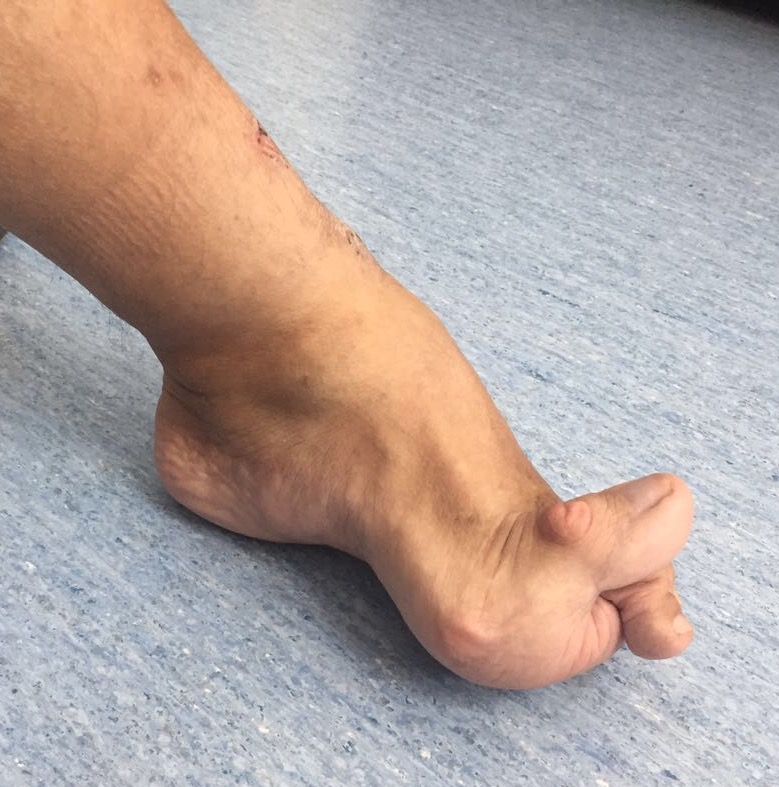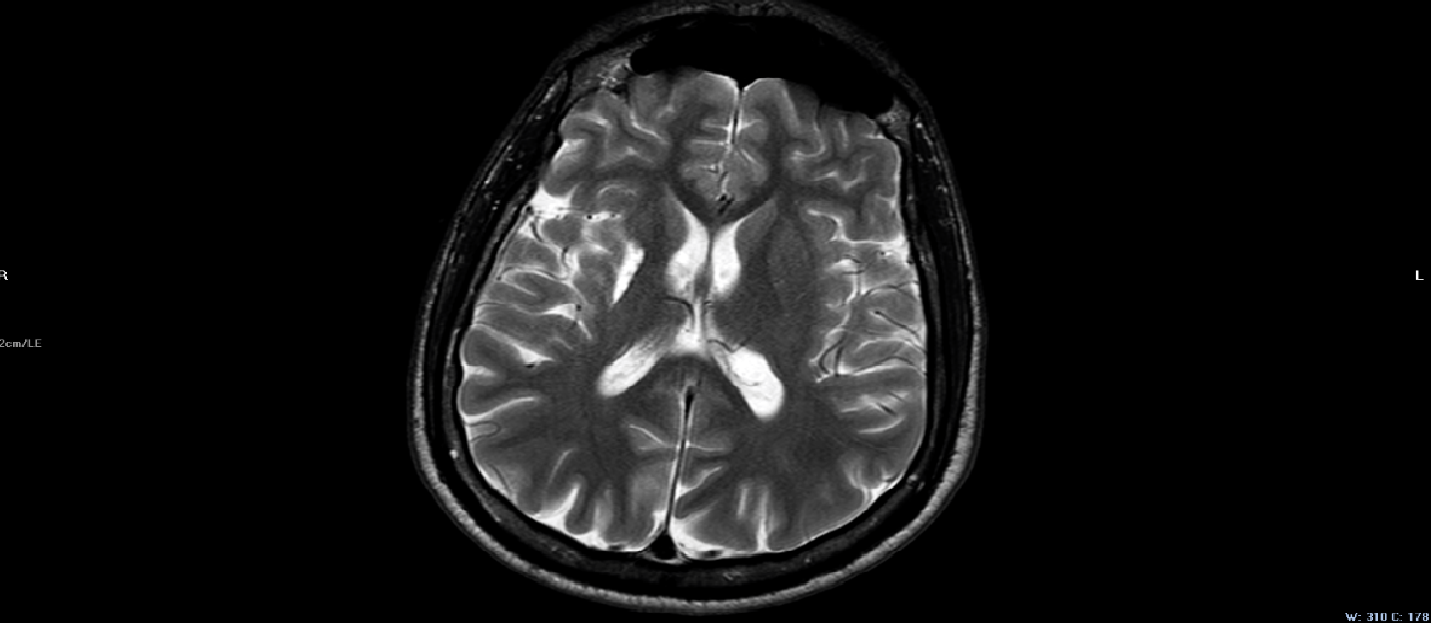Session Information
Date: Thursday, June 8, 2017
Session Title: Dystonia
Session Time: 1:15pm-2:45pm
Location: Exhibit Hall C
Objective: Pathology in the neostriatum (putamen and caudate) may cause deformities of the hand and foot. Striatal toe is a term used to describe the abnormal posture of the foot presenting with inversion and plantar flexion of the ankle and also with dorsiflexion of the great toe in the absence of corticospinal tract dysfunction symptoms. We report a young patient with striatal toe associated with posttraumatic head injury resulting with basal ganglia infarction whom foot deformity developed after the stroke.
Background: 0
Methods: Case Report:
Twenty nine years old male patient suffered from head injury due to a traffic accident brought to the emergency service. Neurologic examination showed confusion, agitation and mild letf hemiparesis. Acute stage brain CT scan was normal where as control showed ischemia of the basal ganglia, suggesting posttraumatic stroke. Hemiparesis improved with physiotherapy but the patient began to develop abnormal posture of the foot. Neurologic examination showed striatal toe with inversion and dorsiflexion of the ankle and dorsiflexion of the great toe(figure 1). The abnormal posture persisted and did not alter during movement, rest and sleep and caused disabling gait disturbance. Cranial magnetic rezonance imaging demonstrated chronic ischemic lesion in the putamen (figure 2).
Results: 0
Conclusions: Discussion:
Hyperkinetic movement disorders are uncommon in acute stroke (1%) and are associated with lesions in the basal ganglia (44%) and talamus (37%), characteristically present unilaterally in the contralateral side of the lesion. Amongst poststroke movement disorders dystonia is the most frequent one. Striatal toe is even a rarer condition seen due to caudate nucleus and putamen lesions. Deformity can interfere with dystonia and Babinski’s sign. Unlike dystonia striatal toe persists during rest and sleep, does not alter with movement. Striatal toe is sometimes labelled as “ pseudobabinski” and can be distinguish from pyramidal Babinski’s sign by the presence of extansor plantar response without fanning of the toes. Striatal toe does not need a stimulus to appear whereas Babinski’s sign is elicited when the sole of the foot is stimulated.
References: 1. F Ghika-Schmid, J Ghika et al. Hyperkinetic movement disorders during and after acute stroke: The Lausanne Stroke Registry;Journal of the Neurological Sciences 10 March 1997, Vol. 145(2): 109-116.
2. Ashour R, et al. Striatal deformities of the hand and foot in Parkinson’s disease. Lancet Neurol. 2005
To cite this abstract in AMA style:
S. Usar Incirli, F. Selcuk Muhtaroglu, C. Akbostanci. Basal Ganglia Infarction and Striatal Toe- A Case Report [abstract]. Mov Disord. 2017; 32 (suppl 2). https://www.mdsabstracts.org/abstract/basal-ganglia-infarction-and-striatal-toe-a-case-report/. Accessed March 28, 2025.« Back to 2017 International Congress
MDS Abstracts - https://www.mdsabstracts.org/abstract/basal-ganglia-infarction-and-striatal-toe-a-case-report/


